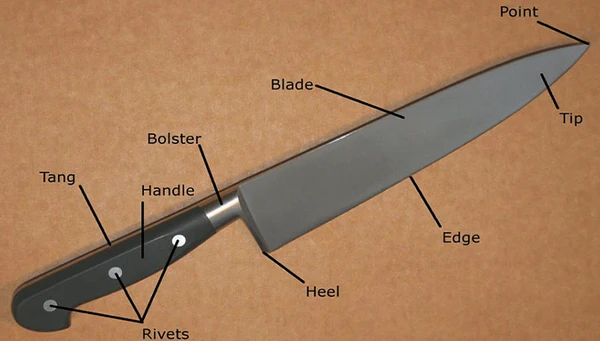Knives are essential tools in our daily lives, from cutting fruits and vegetables in the kitchen to performing outdoor activities like camping and hunting. However, to effectively use a knife, it’s important to understand its anatomy and the different parts that make up a knife. In this article, we’ll delve into the different parts of a knife and their functions.
Introduction
Knives have been used by humans for thousands of years, and their design has evolved over time to meet specific needs. Understanding the different parts of a knife and their functions can help you choose the right knife for the task at hand and improve your knife skills.
Blade
The blade is the primary cutting part of a knife and is typically made of steel. The quality of the steel and its hardness affect the sharpness and durability of the blade. The blade’s shape and thickness also play a role in its cutting ability,hat club store with thinner blades better suited for slicing and thicker blades for chopping.
Point
The point is the tip of the blade and can vary in shape, from a sharp point to a rounded tip. The point is used for piercing and precision cutting.
Edge
The edge is the sharp, cutting part of the blade that comes into contact with the material being cut. The edge can be straight or serrated, with each type having its advantages and disadvantages.
Spine
The spine is the non-cutting, thicker part of the blade opposite the edge. The spine adds weight and balance to the knife and can also be used for tasks like crushing garlic.
Handle
The handle is the part of the knife that you hold while using it and is typically made of wood, plastic, or metal. The handle’s design and material affect its grip, comfort, and durability.
Tang
The tang is the part of the blade that extends into the handle, and its length and shape can affect the knife’s balance and strength.
Bolster
The bolster is the thick, metal part of the knife that separates the blade from the handle. The bolster adds weight and balance to the knife and also protects your hand from the blade.
Handle Scales
The handle scales are the outer covering of the handle and can be made of various materials, including wood, plastic, and metal. The handle scales affect the grip and comfort of the knife and can also provide a decorative element.
Point of Balance
The point of balance is the spot on the knife where the weight is evenly distributed between the blade and the handle. The point of balance affects the knife’s handling and can vary depending on the knife’s design and intended use.
Tang
The tang is the part of the blade that extends into the handle, and its length and shape can affect the knife’s balance and strength.
Bolster
The bolster is the thick, metal part of the knife that separates the blade from the handle. The bolster adds weight and balance to the knife and also protects your hand from the blade.
Types of Knives
Different types of knives have different designs and are intended for specific tasks. Understanding the different types of knives can help you choose the right knife for the job.
Chef’s Knife
A chef’s knife is a versatile knife that can be used for a variety of tasks, including chopping, slicing, and dicing. The blade is typically 8-10 inches long and has a curved edge for rocking back and forth during cutting.
Paring Knife
A paring knife is a small, narrow knife used for precise cutting, such as peeling and trimming fruits and vegetables. The blade is typically 2-4 inches long and has a pointed tip.
Bread Knife
A bread knife has a long, serrated blade that is designed to cut

Average Rating